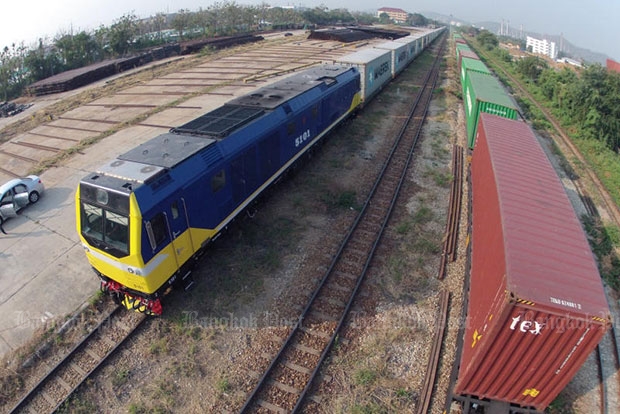
Thailand is calling on Japan to speed up joint development of the ambitious high-speed train project linking Bangkok and Chiang Mai and the one-metre gauge double-track railway route linking Bangkok with eastern and western provinces.
Speaking after meeting Japan's foreign affairs minister Fumio Kishida yesterday, Deputy Prime Minister Somkid Jatusripitak said the rail projects would play a crucial role in logistics services for Asean.
Thailand and Japan signed a memorandum of understanding last year to form a joint investment in a 635km high-speed rail line linking Bangkok and Chiang Mai, and a metre-gauge double-track line linking Bangkok and Kanchanaburi to Laem Chabang and Sa Kaeo's Aranyaprathet, but development has not started.

Somkid: Routes key to Asean logistics
Transport Minister Arkhom Termpittayapaisith, who also met Mr Kishida yesterday, said preliminary studies for both routes are expected in June, with a full-fledged study likely completed by year-end. The studies cover estimated cost, number of passengers, investment return, economic rate of return, and type of investment.
The government is also conducting a feasibility study on the economic rate of return for land development along the rail route to add value to the project. Both the preliminary and feasibility studies for land development will be submitted for cabinet approval by mid-year.
The 575km East-West Corridor rail project will comprise three sections: 180km linking Bangkok and Kanchanaburi, 225km linking Bangkok and Aranyaprathet, and 139km linking Bangkok and Laem Chabang. This route is slated mainly for goods transport, linking the Cambodian border, Eastern seaboard and the planned deep-sea port in Dawei, Myanmar.
Mr Somkid also urged Japan to invest more in the telecom and communication industry, digital economy-related businesses, the Eastern Economic Corridor project, and the new special economic zone for high-tech industry.
The Eastern Economic Corridor will span 26,000 rai of land owned by both the Industrial Estate Authority of Thailand and private industrial estates in Chon Buri, Rayong and Chachoengsao. Agencies are working out special privileges, investment facilitation, infrastructure/logistics, town planning and the environmental impacts.